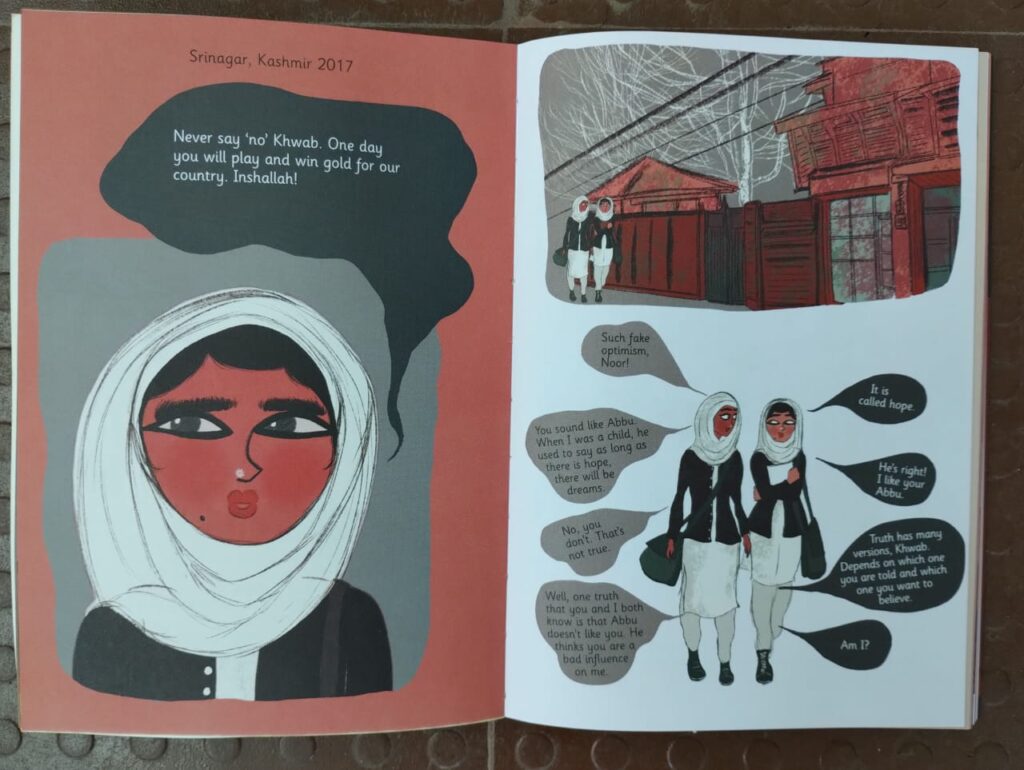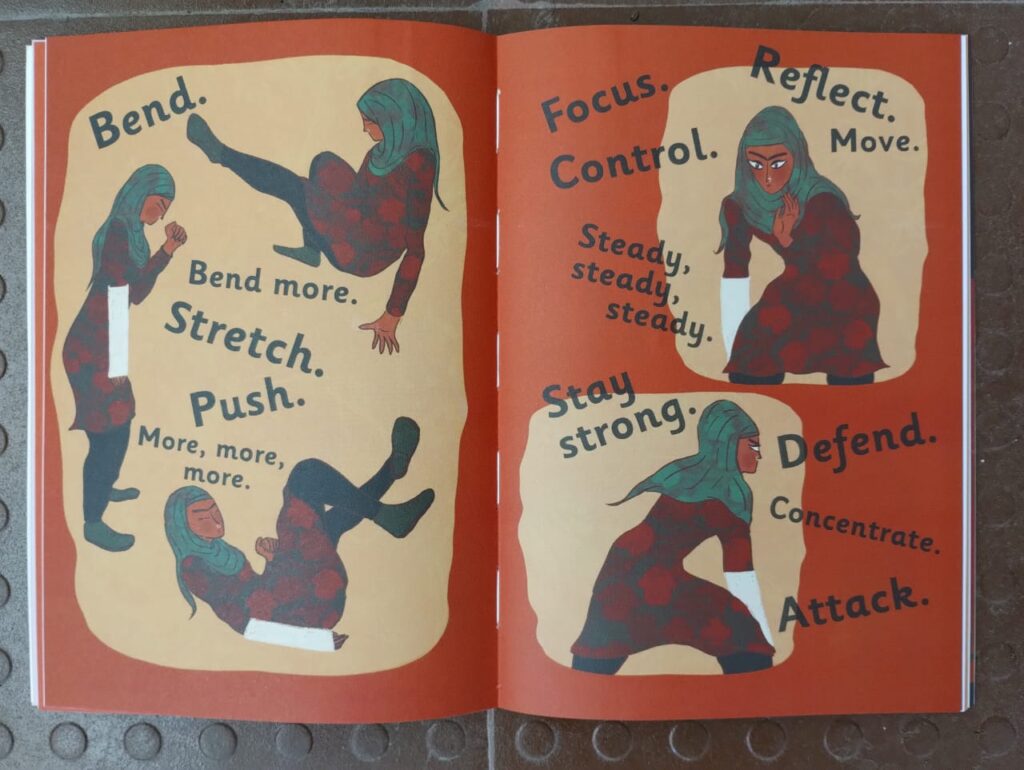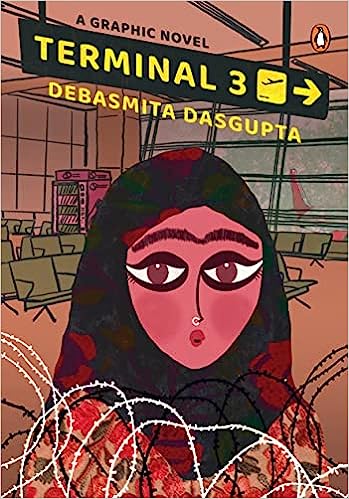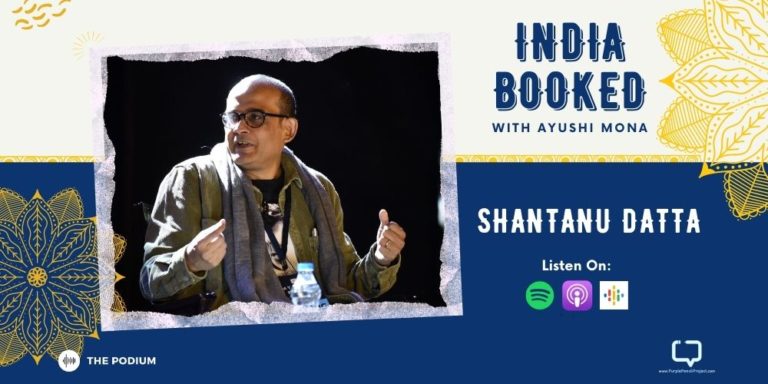Divya Shankar reviews Terminal 3: A Graphic Novel set in Kashmir by Debasmita Dasgupta, published by Penguin India, 2023
The freedom of your dreams means ‘your’ freedom. Freedom of every girl who dares to dream in the ‘Valley’, in this world’. The world that says, you can’t do this because you’re a woman.
Freedom to dream is as vital as breathing is to stay alive. Khwab Nazir, a 17-year-old girl from the Kashmir valley, is representing India at an international jiu-jitsu tournament. To come this far hasn’t been easy.
In fighting the shackles that suppress women, in growing up in a volatile atmosphere in the valley, she has faced opponents more formidable than those in competitions.
Dedicated to the fearless spirit of sportswomen from Kashmir, Terminal 3 by Debasmita Dasgupta, a slim graphic novel for young adults, is a simple tale of friendship, love, loss, grief, and hope and about keeping one’s aspirations alive even in dire circumstances.
We encourage you to buy books from a local bookstore. If that is not possible, please use the links on the page and support us. Thank you.
The Narrative
Split into three parts, the book begins at the New Delhi International Airport where Khwab is waiting to board the flight to San Francisco where she is set to represent India in a jiu-jitsu competition. And in tandem with this setting, the three parts are titled The Arrival, The Transit, and The Departure.
The narrative moves between the present, Aug 2019 to five years back in time when Khwab meets her coach Omar and learns about the martial art form jiu-jitsu for the first time.
There are other events in between with a focus on a life-changing incident in 2017 that deeply affects her and her friend, Noor.
Illustrations
At the heart of any graphic novel, lie its illustrations. And the ones here are splendid and enrich the text well. Khwab, who’s shown as an observant and perceptive girl, is aptly portrayed with big eyes. Khadija Aunty with her patriarchal mindset is depicted with a nose as crooked as her thoughts.

Also, the background changes from white and pink in normal scenarios to assuming black, grey, and red shades during tension and tragedy.
The attention to minor details like chapatis served with khatte baingan and Kashmiri saag, Khwab’s violet Kashida embroidery blanket, and her home in Srinagar lend authenticity to the storytelling.
The Hits
Terminal 3 wins on three grounds. Firstly, a lot of thought has gone into choosing a name for the protagonist and the sport she wishes to pursue. The word ‘Khwab’ means dream and Terminal 3, a slice of Khwab’s life, is also the journey of her dream(khwab), from its inception to its first signs of fruition.
And why Jiu Jitsu? Because the martial art form is not a game for only the big or heavily built, it is where even the small, petite, or physically weak can strike back. In fact, Omar, Khwab’s coach, convinces her to pick up the sport saying,
‘It’s like human chess. It makes use of your brain as much as your body to fight. No punches! No kicks! Only unique techniques to defend and defeat’.
That anyone can defend oneself is an attitude essential for survival in a terror-affected zone.
Secondly, Terminal 3 appeals to its simplicity and scalability. The messages – that an individual is free to dream, and the importance of the role of parents in nurturing their children’s ambitions and not slotting them as per societal expectations – are simple, important, and universal.
The problems that Khwab faces are those any child, especially a girl, faces in a conflict zone where the right to study, play, laugh, and work without fear and anxiety is almost impossible to realize.
Finally, for a nation that doesn’t encourage sports as much or over academics, this story is much needed. A healthy father-daughter relationship and a crowdfunding campaign helping cash-strapped Khwab to realize her dream are heartening to read.
The author, in an interview, says she was inspired to create Terminal 3 after reading about the kickboxer Tajamul Islam from Bandipora, Kashmir and we can’t thank her enough for this.

The Misses
Despite its essential messages, Terminal 3 lacks the depth to linger in our heads after it’s over. It feels like a play where we see the characters on stage and feel for them but forget them right after the curtains fall. Though Khwab and Noor’s friendship is the story’s backbone, the reasons why Khwab’s father doesn’t approve of it remain unclear.
A love story spices up a YA read, but was it essential to have the contents of a few love letters between Yusuf and Noor occupy pages here is a niggling doubt.
Despite the story of Terminal 3 being set in Kashmir Valley and beginning in Aug 2019, a factual endnote on what happened during this time in the valley is missing. Such a note would have made the read comprehensive.
With contemporary national historical or political events absent from the school curriculum, fiction has the job of enlightening its readers apart from engrossing them.
Best Quote
“Failure is never the last answer. It only means you have to try one more time”.
Conclusion
Does growing up mean giving up on your dreams? Do dreams really have boundaries? Terminal 3, a montage of images supported well with text, is an earnest attempt to answer the above questions.
It emphasizes the need to keep our desire to dream and achieve alive. It may not leave a lasting impression but works well as a primer in the portrayal of daily life in a strife-torn zone.
Have you read this graphic novel set in Kashmir? What do you think of it? Drop a comment below and let us know!





















